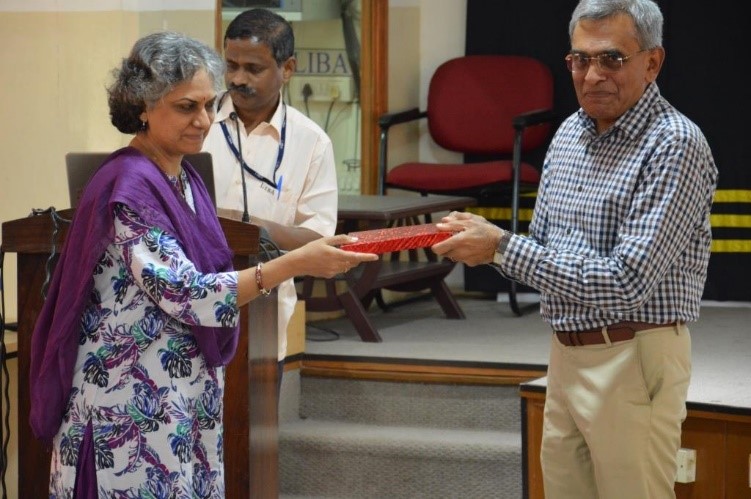
Big Picture and Small Picture
Mr. Damodar Menon – Senior Banker, and Ex-VP & Head of Offshore Banking Operations for Atos (previously Siemens)
In the Beyond Management Initiative session held on 28th November 2018, we had Mr.Damodar, Senior Banker and Ex-VP and Head of offshore Banking Operations for Atos (previously Siemens).
He commenced his talk on “Big Picture and Small Picture” by giving an example for Big picture and small picture. He narrated a situation where three sculptors were asked, what they were doing for which the 1st sculptor replied that “he was cutting stone”, the second sculptor replied that “he was making a statue”, the third sculptor replied that “he was helping to build a temple”. He described the difference in each one’s perspective and that the third sculptor showed the big picture.
He described that the small picture in an organization was given by SLA’s KRA’s productivity, deadlines, top-line (turnover), bottom-line (profit) and the Big picture in an organization were the Organization, Industry, Country, World.
He related the sculptor example with that as a student of management, when management students were asked what they were doing two students replied differently, first student replied that he was a first-year management graduate, the second student replied that he is equipping himself to become a corporate leader. The second student had the big picture in mind.
He mentioned that, the ultimate big picture is to make the world a better place to live in. He added how technology like mobile phones made life easier. He said that both small and big picture is essential, since the basic building block of big picture is small picture. No big picture is possible without small picture. He mentioned that we should think globally and act locally.
A difference between the manager and a leader is that a manager has a small picture in mind, has a framework to work whereas the leader has the big picture in mind, creates vision, convey vision, get people to follow his vision.
Efficiency and Effectiveness differ from each other in ways where the efficiency follows the small picture like handling things and time whereas effectiveness follows the big picture like building relationships and visioning. The other sets of difference he gave were efficiency as working harder and faster and effectiveness was working smarter.
He said that we have a fear to look beyond the small picture, we fear that by looking at the big picture we might lose the small picture. People possess the Small picture which includes wealth, pride, power and the Big picture which includes honesty, value, family and helping the community.
How to build a big picture?
By adhering to values and ethics, culture and practice, build professional relationship, hold back ego, tackle issues not person, contribute to people and society welfare, get employees involved in genuine CSR activities.
He concluded his speech saying we all should be like the sculptor who said, “I am helping build a place of worship”.
Contributed by : Joe Ann, Student, LIBA

